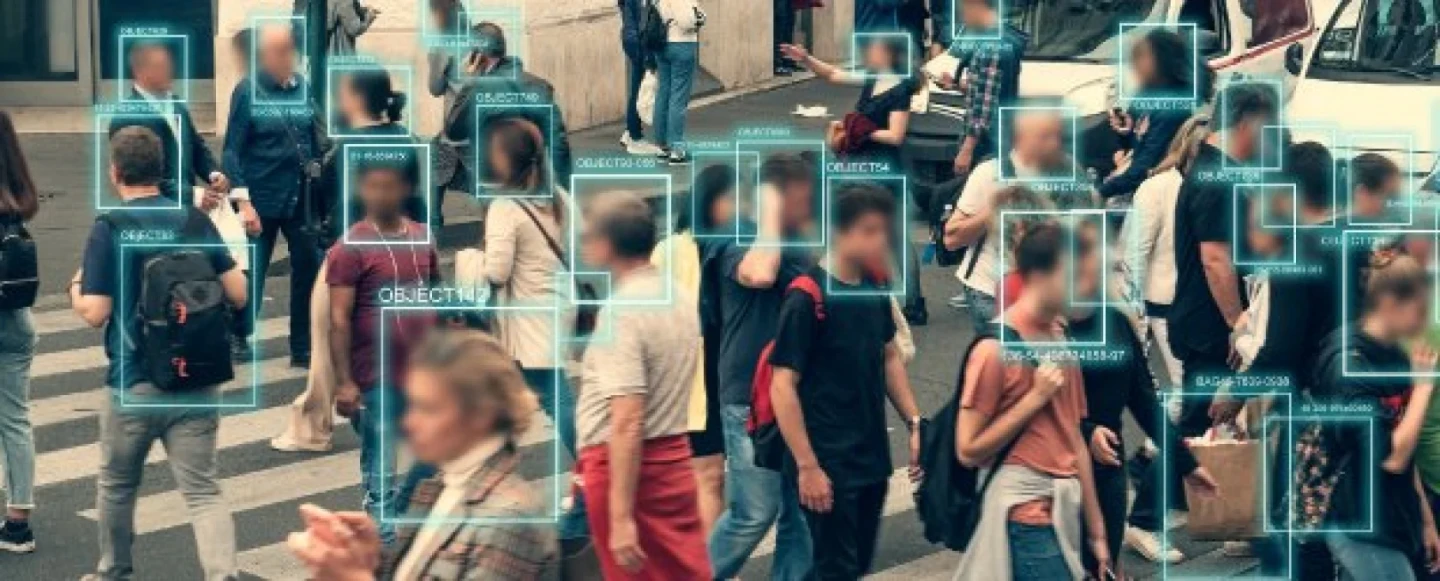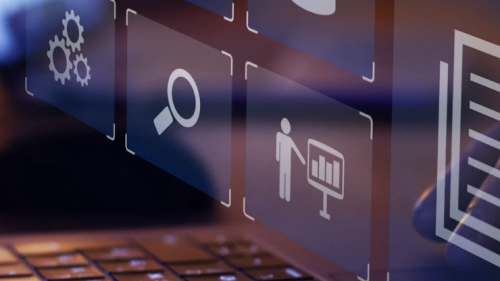It’s easy to think of technology as flashy and fun: the newest TikTok video, the latest virtual background, the most thrilling special effects. Though we may not realize it, technology also plays an enormous role in the progress and achievements of the public sector.
When a technological development is new or soon to be launched, it can draw a lot of interest and excitement. When that innovation succeeds, the excitement quickly fades as the new thing becomes an accepted norm. You might remember when email, cell phones, smartphones and social media were thrillingly new; they have long since become part of the fabric of daily life. The same may soon be said for these recent additions to public sector technology.
Taking the Census Online
Consider what the US census1 used to look like: It began in 1790, when information was collected and handwritten by US marshals who visited outposts across the new country. Every ten years, the process repeated and progressed, with an electrical punch card tabulator introduced in 1890, the world’s first modern computer, the UNIVAC 1, used in 1950, and paper questionnaires mailed out in 1970.
In more recent decades, four technological applications have advanced the census process in important ways:
Satellite imagery
In order to contact and count every person in the country, the Census Bureau needs accurate addresses. Its employees used to canvass neighborhoods in person, updating paper records by hand. This was slow and expensive. For the 2010 census alone, Bureau employees travelled a staggering 137 million miles to get the job done.
In 2015, Bureau employees compared aerial images from a network of satellites, taken in 2010 and again in 2015. They were able to identify new construction of houses, apartments and other housing, and validated 65% of all housing in the country without ever leaving the office. The remaining 35% were validated by field workers in two months.
Online self-response
In the 2020 census, for the first time, people had the option of responding online, as well as by phone or mail. Every response was encrypted, and the website for completing the census online was made available in 12 languages in addition to English. To assist people who had little or no home internet access, Bureau employees provided computers and tablets at libraries, community centers, healthcare centers and places of worship.
Mobile devices
In 2020, census takers who went door-to-door collected information on smartphones rather than paper, using a custom application created by the Census Bureau. Accessing the devices required two-factor authentication, the recorded information was encrypted and, as soon as it was uploaded to the Bureau’s digital vault, wiped from the individual devices. Software in the smartphones also provided specific routes for the census takers to follow, which made their work more time-efficient.
Data protection
The Census Bureau is the leading source of quality data about this country’s people and economy. All responses to the 2020 census are confidential and protected by law, and the Bureau is barred by federal code from publishing or disclosing any private information. Bureau employees can face prison terms and large fines for violating this confidentiality.
Technology and innovation provide increasing opportunities to share this data—including through data mashups: algorithms that can detect a data set’s origin—and to protect it. The Census Bureau’s Disclosure Avoidance System is one of multiple means it has developed to safeguard and prevent improper disclosure of private information.
Tracking COVID-19 Via App
On September 24, 2020, Britain’s National Health Service (NHS) launched its COVID-19 app. Operating alongside the NHS’s Test and Trace program, the app provides six key functions:2
- Tracing tells users if they’ve been near other app users who have tested positive for the coronavirus
- Alerts notify users of the current state of risk in their postal code districts
- Check-ins inform users if they’ve visited a venue where they may have incurred infection risk
- The symptoms function helps users determine if they’re experiencing coronavirus symptoms and need to order free tests
- The test function helps people book testing appointments and get results
- The isolate function helps users track their self-isolation timelines and find helpful advice
As of March 3, 2021, 56% of the population had downloaded the app. According to research conducted by the Alan Turing Institute, its use has prevented approximately 600,000 cases of the coronavirus.3
The NHS updates the app weekly and has already revamped it multiple times. The October revamp was designed to reduce ‘ghost notifications’—contact alerts that disappeared when users tried to open them. Future improvements may include information on whether app users have been vaccinated.3
The app’s developers are working now to sync its contact-tracing functions with the UK’s manual program. The app makes contact tracing very inexpensive but, as not everyone in the country has access to it, the manual tracing processes remain essential.3
The Turing Institute’s research makes a compelling case for expanded adoption of the app. It found that the app’s average of 4.4 close-contact notifications per positive case, compared with purely manual tracing, could have prevented as many as 900,000 coronavirus cases this winter. For every percentage point increase in the proportion of app users, the number of infections may be reduced by 2.3%.3
Creating Anticipatory Governance Through Predictive Analytics
Around the world, technology is helping governments shift their focus from crisis recovery to crisis prevention. Thanks to the use of predictive analytics and artificial intelligence (AI), modern governments are more able now than ever before to analyze data, identify behavioral patterns, forecast potential disasters and take preemptive measures. These include advances in:4
Crime reduction
AI helps police departments observe patterns and interrelations in criminal activities and identify crime ‘hotspots,’ which leads to quicker intervention. By using predictive models, departments are better able to deploy officers to the areas where they’re most needed.
The fight against human trafficking
According to a survey conducted by the anti-human-trafficking organization Thorn, about 75% of child trafficking involves online advertisements. In a joint effort with commercial technology experts, the US Defense Advanced Research Projects Agency (DARPA) has developed a platform that monitors online ads and extrapolates connections between them and trafficking rings. This has helped authorities identify high-risk online ads, detect code words used by traffickers, locate and rescue millions of victims, and prosecute traffickers.
Food inspections
Analytics are helping food safety inspectors predict which restaurants and hotels will need their attention. In Las Vegas, the city health department has used advanced AI technologies to analyze thousands of tweets each day for food-poisoning-related clues. By tracking phrases such as ‘I feel nauseous,’ they’re now able to identify venues likely to present public health hazards.
Natural-disaster preparation
By using sensor-collected historical flood data and tapping into citizen complaint records, Indonesia’s government has become able to identify flood-prone areas. It has used the information to identify flood locations, expedite its flood-management responses, and alert citizens about floods.
Counterterrorism
The European Union’s Horizon 2020 program has launched the Real-time Early Detection (RED) Alert, which is designed to provide early alerts of potential propaganda and signs of warfare online by identifying social media content posted by extremists.
Traffic-accident prevention
The UK’s Behavioural Insights Team (BIT) has used predictive analytics to reduce traffic accidents in East Sussex. It developed an algorithm, based on data collected over a decade, which found that locals who have been previously caught speeding are often at risk for dangerous accidents. As a result, the team modified the notices sent to speeders to persuade them to follow speed limits, and the interventions helped reduce reoffending by 20%.
Use Your Expertise to Advance the Public Good.
Become a trusted public service authority in Kent State’s online Master of Public Administration and Postbaccalaureate Certificate in Nonprofit Management programs. Explore the robust online curriculum: It’s designed for working professionals who are driven to advance their public service careers while serving local communities and the world community.
Sources:
- All information regarding the US census was retrieved on March 4, 2021, from census.gov/library/stories/2020/05/four-ways-new-technology-is-revolutionizing-the-2020-census.html
- Retrieved on March 4, 2021, from covid19.nhs.uk/what-the-app-does.html
- Retrieved on March 4, 2021, from publictechnology.net/articles/features/making-contact-inside-project-build-nhs-covid-19-app
- All information regarding predictive analytics was retrieved on March 4, 2021, from deloitte.com/us/en/insights/industry/public-sector/government-trends/2020/predictive-analytics-in-government.html





